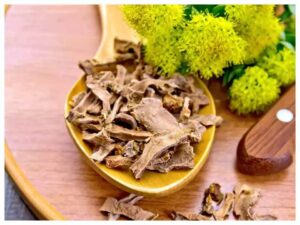The Mysterious Discovery of Witch Hazel
A Strange and Perplexing Encounter in the Woods
The story of how witch hazel was first discovered is shrouded in mystery and intrigue. According to legend, the Native American tribes of the Northeast were the first to recognize the medicinal properties of the plant.
It is said that one day, a tribal healer was wandering through the woods when he stumbled upon a small, flowering shrub. He was immediately struck by the plant’s delicate beauty, but what really caught his attention were the strange, twisting branches that seemed to defy explanation.
As he approached the shrub, he noticed that it was oozing a clear, watery liquid from its leaves and twigs. Intrigued, he plucked a few leaves and brought them back to his village for further investigation.
The Healing Properties of Witch Hazel
Upon closer examination, the tribal healer discovered that the liquid was not only harmless, but it also had astringent and anti-inflammatory properties. He began to experiment with the liquid, using it to treat various ailments such as skin irritations, insect bites, and minor wounds.
Word of the healer’s discovery quickly spread throughout the region, and soon other tribes were using witch hazel to treat their own ailments. The plant became known as “wytch hazel,” a reference to its twisted branches and magical healing properties.
As European settlers began to arrive in the Americas, they too discovered the medicinal properties of witch hazel. In the 19th century, American doctors began to use witch hazel extract to treat a variety of ailments, including hemorrhoids, varicose veins, and skin irritations.
The Botanical Mystery of Witch Hazel
Despite its long history of medicinal use, the botanical origins of witch hazel remain somewhat of a mystery. The plant is native to North America, but its exact species and genetic origins are still a subject of debate among botanists and horticulturalists.
Some experts believe that witch hazel is a hybrid species, the result of cross-breeding between two different plants. Others speculate that the plant may have ancient origins, dating back to the days of the dinosaurs.
The Enduring Appeal of Witch Hazel
Today, witch hazel remains a popular and versatile natural remedy, prized for its gentle yet effective healing properties. It can be found in a variety of forms, including liquid extract, creams, and toners.
Whether you’re looking to soothe a sunburn, clear up acne, or simply give your skin a healthy glow, witch hazel is a natural and effective solution that has stood the test of time.
The enduring appeal of witch hazel is not only due to its natural healing properties, but also its versatility. It can be used in various forms and for a range of purposes, making it a staple ingredient in many skincare and medicinal products.
One of the reasons for witch hazel’s versatility is its astringent properties. When applied to the skin, it causes the pores to contract, which helps to reduce inflammation, redness, and irritation. This makes it an effective treatment for a variety of skin conditions, including acne, eczema, and psoriasis.
Witch hazel is also known for its antioxidant properties, which can help to protect the skin from damage caused by free radicals. This makes it an effective anti-aging ingredient, as well as a useful tool for protecting the skin from environmental toxins.
In addition to its skincare benefits, witch hazel has also been used as a traditional remedy for a variety of internal ailments. For example, it has been used to treat diarrhea, dysentery, and menstrual cramps, as well as to relieve symptoms associated with varicose veins and hemorrhoids.
Despite its many benefits, witch hazel is still a subject of debate in the scientific community. While some studies have confirmed its effectiveness as a natural remedy, others have found little to no evidence to support its use.
Nevertheless, for those who swear by its healing properties, witch hazel remains a powerful and effective tool for promoting healthy skin and overall well-being. Whether you’re looking to clear up a stubborn breakout or simply want to give your skin a healthy glow, witch hazel is a natural and time-tested solution that is well worth exploring.

The Many Health Benefits of Witch Hazel
A Versatile and Potent Natural Remedy
Witch hazel is a natural remedy that has been used for centuries for its many health benefits. This potent plant is native to North America and is widely known for its anti-inflammatory, astringent, and antioxidant properties.
Witch hazel is a versatile plant that can be used for a variety of health purposes. It is commonly used to treat skin conditions, such as acne, eczema, and psoriasis, but it can also be used to treat internal ailments, such as diarrhea, menstrual cramps, and hemorrhoids.
In this article, we will explore the many health benefits of witch hazel and how it can be used to promote overall health and well-being.
Anti-Inflammatory Properties of Witch Hazel
One of the primary health benefits of witch hazel is its anti-inflammatory properties. When applied to the skin, witch hazel can help to reduce redness, swelling, and irritation. This makes it an effective treatment for a variety of skin conditions, including acne, eczema, and psoriasis.
Witch hazel contains compounds called tannins, which have been shown to reduce inflammation and protect against cellular damage. These compounds work by binding to proteins in the skin and reducing the activity of inflammatory enzymes.
In addition to its anti-inflammatory properties, witch hazel also has a cooling and soothing effect on the skin, which can help to relieve discomfort and irritation.
Astringent Properties of Witch Hazel
Witch hazel is also known for its astringent properties, which make it an effective treatment for a variety of skin conditions. Astringents work by causing the skin to contract, which helps to reduce inflammation, redness, and irritation.
When applied to the skin, witch hazel can help to tighten and firm the skin, which can reduce the appearance of fine lines and wrinkles. It can also be used to reduce the size of pores and improve skin texture.
In addition to its skincare benefits, witch hazel can also be used to treat internal ailments, such as diarrhea and menstrual cramps. When taken internally, witch hazel can help to reduce inflammation in the digestive system and relieve discomfort.
Antioxidant Properties of Witch Hazel
Witch hazel is also rich in antioxidants, which can help to protect the skin from damage caused by free radicals. Free radicals are unstable molecules that can damage cells and contribute to aging and disease.
By neutralizing free radicals, antioxidants help to protect the skin from environmental toxins and other harmful substances. This can help to promote healthy skin and reduce the signs of aging.
Other Health Benefits of Witch Hazel
In addition to its anti-inflammatory, astringent, and antioxidant properties, witch hazel has a variety of other health benefits. Here are some of the ways that witch hazel can be used to promote overall health and well-being:
- Relieve Pain and Inflammation: Witch hazel can be used topically to relieve pain and inflammation associated with conditions such as arthritis and sore muscles.
- Treat Hemorrhoids: Witch hazel can be used to treat hemorrhoids, which are swollen veins in the rectum and anus. Witch hazel can help to reduce inflammation and soothe discomfort.
- Soothe Sunburn: Witch hazel can be used to soothe sunburned skin. Its cooling and anti-inflammatory properties can help to reduce redness and discomfort.
- Treat Varicose Veins: Witch hazel can be used to treat varicose veins, which are swollen and twisted veins that can be painful and unsightly. Witch hazel can help to reduce inflammation and improve circulation.
Conclusion
Witch hazel is a versatile and potent natural remedy that has been used for centuries for its many health benefits. Its anti-inflammatory, astringent, and antioxidant properties make it an effective treatment for a variety of skin conditions, as well as internal ailments such as diarrhea and menstrual cramps.
Whether you use witch hazel topically or internally, it is important to use caution and follow recommended dosages. As with any natural remedy, it is also important to consult with a healthcare provider before using witch hazel, especially if you are pregnant, breastfeeding, or taking any medications.
Overall, witch hazel is a valuable tool for promoting overall health and well-being, and its many benefits make it a natural remedy that is well worth exploring.
The Nutritional Components and Core Ingredients of Witch Hazel
A Natural and Potent Plant-Based Remedy
Witch hazel is a natural remedy that has been used for centuries for its many health benefits. This versatile plant is native to North America and is widely known for its anti-inflammatory, astringent, and antioxidant properties.
Witch hazel contains a variety of nutritional components and core ingredients that contribute to its many health benefits. In this article, we will explore the nutritional components and core ingredients of witch hazel and how they work together to promote overall health and well-being.
Nutritional Components of Witch Hazel
Witch hazel contains a variety of nutritional components that contribute to its many health benefits. Here are some of the key nutritional components found in witch hazel:
- Tannins: Witch hazel is rich in tannins, which are polyphenolic compounds that have astringent properties. Tannins work by binding to proteins in the skin and reducing the activity of inflammatory enzymes. This makes witch hazel an effective treatment for a variety of skin conditions, such as acne, eczema, and psoriasis.
- Flavonoids: Witch hazel also contains flavonoids, which are antioxidant compounds that help to protect the skin from damage caused by free radicals. Flavonoids work by neutralizing free radicals and reducing oxidative stress. This can help to promote healthy skin and reduce the signs of aging.
- Gallic Acid: Witch hazel contains gallic acid, which is a phenolic acid that has antioxidant properties. Gallic acid works by scavenging free radicals and reducing oxidative stress. This can help to protect the skin from environmental toxins and other harmful substances.
- Catechins: Witch hazel also contains catechins, which are antioxidant compounds that help to protect the skin from damage caused by UV radiation. Catechins work by reducing the production of reactive oxygen species (ROS), which can damage cells and contribute to aging and disease.
Core Ingredients of Witch Hazel
In addition to its nutritional components, witch hazel also contains a variety of core ingredients that contribute to its many health benefits. Here are some of the key core ingredients found in witch hazel:
- Hamamelitannin: Witch hazel contains hamamelitannin, which is a type of tannin that has astringent properties. Hamamelitannin works by binding to proteins in the skin and reducing the activity of inflammatory enzymes. This makes witch hazel an effective treatment for a variety of skin conditions, such as acne, eczema, and psoriasis.
- Catechol: Witch hazel also contains catechol, which is a phenolic compound that has antioxidant properties. Catechol works by scavenging free radicals and reducing oxidative stress. This can help to protect the skin from environmental toxins and other harmful substances.
- Quercetin: Witch hazel contains quercetin, which is a flavonoid that has antioxidant properties. Quercetin works by neutralizing free radicals and reducing oxidative stress. This can help to promote healthy skin and reduce the signs of aging.
How Nutritional Components and Core Ingredients Work Together
The nutritional components and core ingredients found in witch hazel work together to promote overall health and well-being. When applied topically to the skin, witch hazel can help to reduce inflammation, redness, and irritation, while also protecting the skin from damage caused by free radicals.
Witch hazel can also be taken internally as a natural remedy for internal ailments, such as diarrhea and menstrual cramps. When taken internally, witch hazel can help to reduce inflammation in the digestive system and relieve discomfort.
Overall, the nutritional components and core ingredients found in witch hazel work together to provide a natural and potent plant-based remedy for a variety of health conditions. Whether you are looking to improve your skin health or treat internal ailments, witch hazel is a versatile and effective natural remedy.
How to Incorporate Witch Hazel into Your Health Routine
There are many ways to incorporate witch hazel into your health routine. Here are some of the most common ways to use witch hazel:
- Topical Application: Witch hazel can be applied topically to the skin using a cotton ball or pad. Simply saturate the cotton with witch hazel and apply it to the affected area. This can be done several times a day as needed.
- Internal Use: Witch hazel can be taken internally as a tincture or tea. However, it is important to use caution when taking witch hazel internally, as it can cause liver damage if taken in excessive amounts.
- In Skincare Products: Witch hazel is a common ingredient in many skincare products, including toners, cleansers, and moisturizers. Look for products that contain witch hazel and use them as directed.
When using witch hazel, it is important to choose high-quality products that are free from additives and preservatives. Look for products that are made from pure witch hazel extract and do not contain any synthetic ingredients.
It is also important to use caution when using witch hazel, especially if you have sensitive skin. While witch hazel is generally considered safe, it can cause skin irritation in some people. If you experience any redness, itching, or irritation after using witch hazel, discontinue use and consult a healthcare provider.
Conclusion
Witch hazel is a natural remedy that has been used for centuries for its many health benefits. Its nutritional components and core ingredients work together to provide a potent and effective plant-based remedy for a variety of health conditions.
Whether you are looking to improve your skin health or treat internal ailments, witch hazel is a versatile and effective natural remedy. With its anti-inflammatory, astringent, and antioxidant properties, witch hazel is a valuable tool for promoting overall health and well-being.

Methods for Consuming Witch Hazel
Drinking Witch Hazel Tea
One of the most common ways to consume witch hazel is as a tea. Witch hazel tea is made by steeping the leaves, bark, or twigs of the witch hazel plant in hot water. The resulting tea can be consumed either hot or cold.
Witch hazel tea is often used to treat internal ailments, such as diarrhea, menstrual cramps, and hemorrhoids. When consumed internally, witch hazel can help to reduce inflammation in the digestive system and relieve discomfort.
It is important to note that while witch hazel tea is generally considered safe, it can cause liver damage if taken in excessive amounts. It is also important to choose high-quality witch hazel tea that is free from additives and preservatives.
Using Witch Hazel Tincture
Another common way to consume witch hazel is as a tincture. Witch hazel tincture is made by extracting the active ingredients from the witch hazel plant using alcohol or another solvent.
Witch hazel tincture can be applied topically to the skin to treat a variety of skin conditions, such as acne, eczema, and psoriasis. When applied topically, witch hazel tincture can help to reduce inflammation, redness, and irritation.
Witch hazel tincture can also be taken internally to treat internal ailments, such as diarrhea and menstrual cramps. However, it is important to use caution when taking witch hazel tincture internally, as it can cause liver damage if taken in excessive amounts.
Taking Witch Hazel Supplements
Witch hazel supplements are another way to consume this natural remedy. Witch hazel supplements are typically available in capsule or tablet form and can be taken orally.
Witch hazel supplements are often used to treat internal ailments, such as diarrhea, menstrual cramps, and hemorrhoids. When taken internally, witch hazel supplements can help to reduce inflammation in the digestive system and relieve discomfort.
It is important to choose high-quality witch hazel supplements that are free from additives and preservatives. It is also important to follow recommended dosages and use caution when taking witch hazel supplements, as they can cause liver damage if taken in excessive amounts.
Using Witch Hazel in Skincare Products
In addition to its internal uses, witch hazel can also be used topically in skincare products. Witch hazel is a common ingredient in many skincare products, including toners, cleansers, and moisturizers.
When used in skincare products, witch hazel can help to reduce inflammation, redness, and irritation, while also protecting the skin from damage caused by free radicals. Witch hazel can also be used to tighten and firm the skin, which can reduce the appearance of fine lines and wrinkles.
It is important to choose high-quality skincare products that contain pure witch hazel extract and do not contain any synthetic ingredients. It is also important to follow the instructions on the product label and use caution when using witch hazel topically, especially if you have sensitive skin.
Conclusion
Witch hazel is a versatile and potent natural remedy that can be consumed in a variety of ways. Whether you choose to drink witch hazel tea, use witch hazel tincture, take witch hazel supplements, or use witch hazel in skincare products, it is important to choose high-quality products that are free from additives and preservatives.
When consuming witch hazel internally, it is also important to use caution and follow recommended dosages. Witch hazel can cause liver damage if taken in excessive amounts, so it is important to use it in moderation.
Overall, witch hazel is a valuable tool for promoting overall health and well-being. Whether you are looking to treat internal ailments or improve your skin health, there are many ways to incorporate witch hazel into your health routine.
It is important to note that while witch hazel is generally considered safe, it can cause skin irritation in some people. If you experience any redness, itching, or irritation after using witch hazel, discontinue use and consult a healthcare provider.
If you are pregnant, breastfeeding, or taking any medications, it is also important to consult with a healthcare provider before using witch hazel. While it is a natural remedy, it can interact with certain medications and may not be safe for everyone.
Overall, witch hazel is a versatile and effective natural remedy that has been used for centuries for its many health benefits. With its anti-inflammatory, astringent, and antioxidant properties, witch hazel is a natural remedy that is well worth exploring.
Potential Side Effects and When to Avoid Taking Witch Hazel
Potential Side Effects of Witch Hazel
Witch hazel is generally considered safe when used in moderation. However, some people may experience side effects after using witch hazel. Here are some of the potential side effects of witch hazel:
- Skin irritation: Witch hazel can cause skin irritation in some people. If you experience redness, itching, or irritation after using witch hazel topically, discontinue use and consult a healthcare provider.
- Liver damage: Taking excessive amounts of witch hazel internally can cause liver damage. It is important to follow recommended dosages and use caution when taking witch hazel internally.
- Allergic reactions: Some people may be allergic to witch hazel. If you experience symptoms such as hives, swelling, or difficulty breathing after using witch hazel, discontinue use and seek medical attention.
When to Avoid Taking Witch Hazel
While witch hazel is generally considered safe, there are some situations where it may not be appropriate to use. Here are some of the situations where you should avoid taking witch hazel:
- Pregnancy: There is not enough research to determine the safety of witch hazel during pregnancy. It is recommended that pregnant women avoid using witch hazel unless under the guidance of a healthcare provider.
- Breastfeeding: There is not enough research to determine the safety of witch hazel during breastfeeding. It is recommended that breastfeeding women avoid using witch hazel unless under the guidance of a healthcare provider.
- Children: There is not enough research to determine the safety of witch hazel in children. It is recommended that children avoid using witch hazel unless under the guidance of a healthcare provider.
- Medications: Witch hazel can interact with certain medications, such as blood thinners and diabetes medications. If you are taking any medications, it is important to consult with a healthcare provider before using witch hazel.
How to Use Witch Hazel Safely
To use witch hazel safely, it is important to choose high-quality products that are free from additives and preservatives. When using witch hazel topically, it is also important to do a patch test before using it on a larger area of the skin.
When taking witch hazel internally, it is important to follow recommended dosages and use caution. It is also important to use caution when using witch hazel topically, especially if you have sensitive skin.
If you experience any side effects after using witch hazel, discontinue use and consult a healthcare provider. If you are pregnant, breastfeeding, or taking any medications, it is also important to consult with a healthcare provider before using witch hazel.






